Matej Trampuš & Steve Shadders
Nano services and dust return transactions + long chain
#1about 8 minutes
Understanding and mitigating Bitcoin dusting attacks
Dusting attacks compromise user privacy by linking addresses, but new dust return transactions solve this by allowing users to donate dust to miners.
#2about 8 minutes
Enabling nano services with consolidation transactions
Consolidation transactions allow service providers to bundle many small, uneconomic payments into a single useful output with zero fees, enabling new business models.
#3about 5 minutes
Rules for building valid consolidation transactions
To create a valid zero-fee consolidation transaction, follow specific rules of thumb, such as using at least 100 inputs to one output and ensuring inputs are confirmed.
#4about 8 minutes
Scaling Bitcoin by removing the ancestor limit
Removing the 25-transaction ancestor limit required architectural changes like a new block assembler and a split mempool to enable long transaction chains.
#5about 5 minutes
A robust mechanism for double spend notifications
A new protocol uses a special OP_RETURN output with callback server IPs to notify merchants of double spend attempts, even those deep within the network.
#6about 2 minutes
Performance improvements in recent BSV node versions
Recent node software updates have increased the ancestor count limit to 10,000 and improved performance for complex transaction graphs, with more enhancements planned.
Related jobs
Jobs that call for the skills explored in this talk.
Matching moments
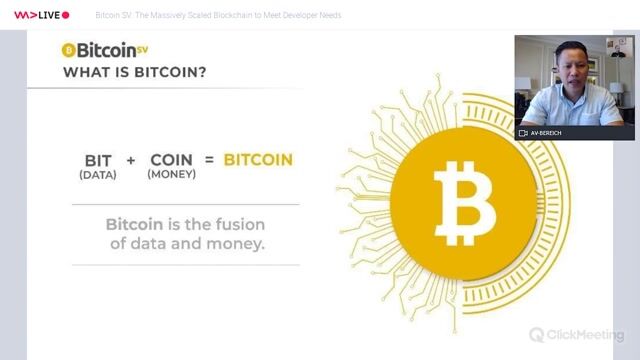
03:32 MIN
Understanding the core principles of Bitcoin SV
Bitcoin SV: The Massively Scaled Blockchain to Meet Developer Needs
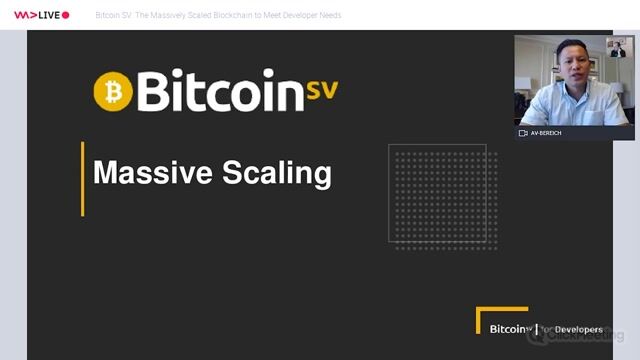
08:01 MIN
Achieving massive scale and ultra-low transaction fees
Bitcoin SV: The Massively Scaled Blockchain to Meet Developer Needs

50:25 MIN
Answering developer questions on BSV technology and roadmap
Bitcoin SV: The Massively Scaled Blockchain to Meet Developer Needs

01:33 MIN
Simplifying Bitcoin micropayments for developers
Connect API for Bitcoin SV applications
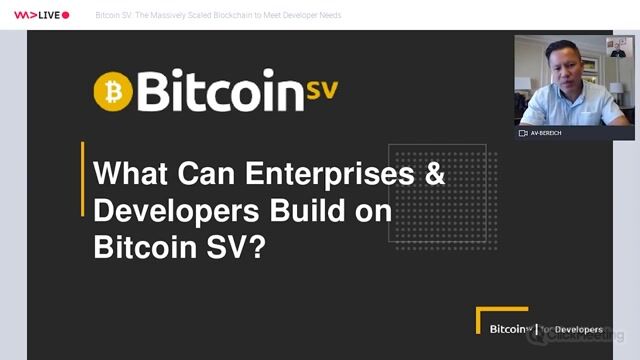
15:33 MIN
Exploring the Bitcoin SV application ecosystem
Bitcoin SV: The Massively Scaled Blockchain to Meet Developer Needs

25:18 MIN
Building a permanent and cooperative digital economy
Bitcoin- Ledger vs Blockchain
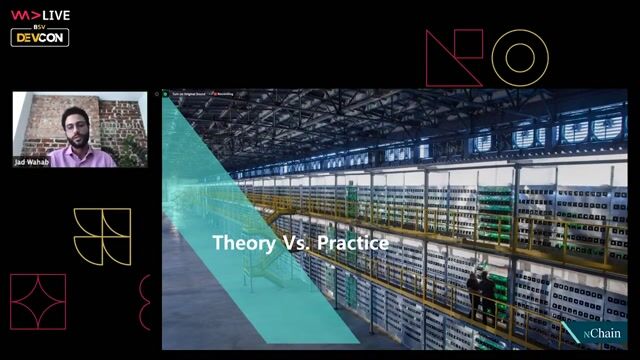
21:59 MIN
Exploring services offered through the Merchant API
Miner fee calculation and merchant API - new tools for the Bitcoin SV network
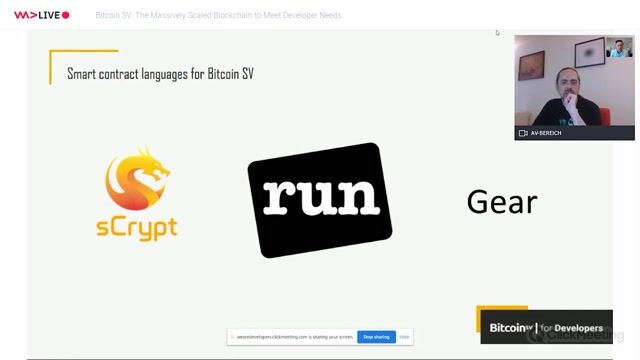
42:32 MIN
Essential developer tools and resources for Bitcoin SV
Bitcoin SV: The Massively Scaled Blockchain to Meet Developer Needs
Featured Partners
Related Videos
 41:09
41:09Bitcoin- Ledger vs Blockchain
Evan Freeman
 33:37
33:37Bitcoin transactions- embedding and using data for applications built on Bitcoin SV
Jack Davies & Alessio Pagani
 52:11
52:11Miner fee calculation and merchant API - new tools for the Bitcoin SV network
Jad Wahab
 1:16:37
1:16:37Bitcoin SV: The Massively Scaled Blockchain to Meet Developer Needs
Jimmy Nguyen & Steve Shadders
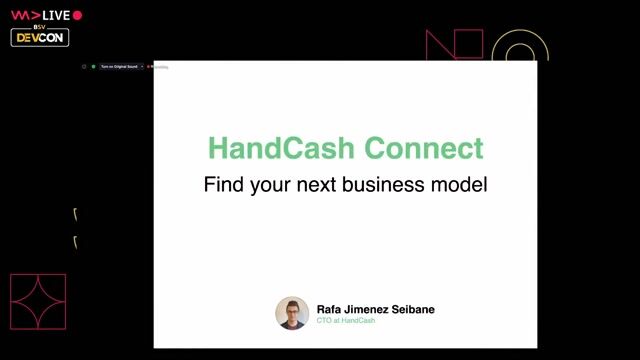 42:37
42:37Connect API for Bitcoin SV applications
Rafa Jiménez
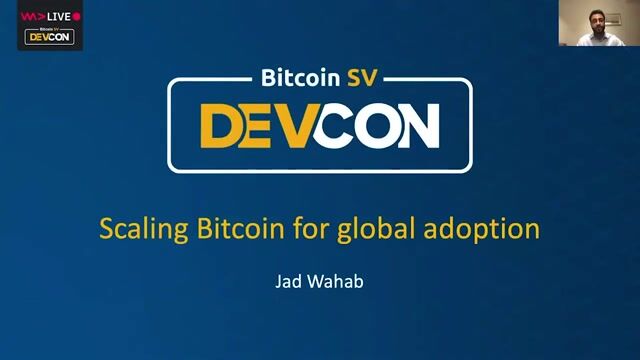 29:20
29:20Scaling Bitcoin for global adoption
Jad Wahab
 46:29
46:29Business sensibilities when developing for Bitcoin
Joshua Henslee
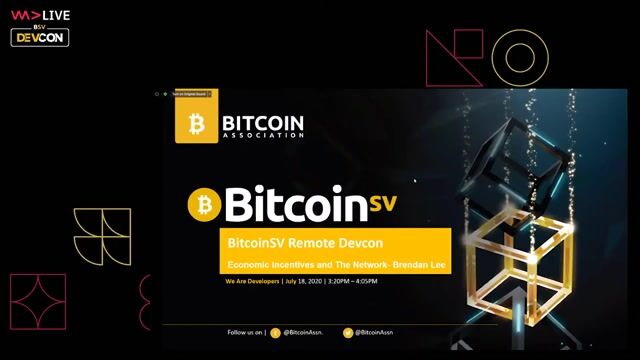 39:53
39:53Economic incentives and the Bitcoin network
Brendan Lee
From learning to earning
Jobs that call for the skills explored in this talk.

Technical Documentation Engineer (Wallets)
Tether Operations Limited
Remote
Intermediate
API
Bitcoin
Ethereum
JavaScript
+2



Senior PHP Developer (NL based only)
Online Payment Platform
Delft, Netherlands
€75-95K
Senior
PHP
MySQL
Laravel


Senior Backend Developer (m/f/d)
Laserhub GmbH
Stuttgart, Germany
Remote
€70-80K
Senior
MySQL
Docker
MongoDB
+2
![Senior Software Engineer [TypeScript] (Prisma Postgres)](https://wearedevelopers.imgix.net/company/283ba9dbbab3649de02b9b49e6284fd9/cover/oKWz2s90Z218LE8pFthP.png?w=400&ar=3.55&fit=crop&crop=entropy&auto=compress,format)
Senior Software Engineer [TypeScript] (Prisma Postgres)
Prisma
Remote
Senior
Node.js
TypeScript
PostgreSQL

Domain Architect Ricardo Platform (f/m/d) | 80-100% | Hybrid working model | Valbonne France
SMG Swiss Marketplace Group
Canton de Valbonne, France
Senior

Mid/Senior Fullstack Engineer (Typescript/Javascript) - Hybrid working model 100%, Ho Chi Minh City
SMG Swiss Marketplace Group
Ho Chi Minh City, Viet Nam
Senior